You have no items in your cart. Want to get some nice things?
Go shopping19/07/12 – One week before Olympic Games Opening Ceremony
Walking constantly with the Fence to my left, I am tracing the edge of the Olympic Park. Going where it goes, stopping where it stops me. The vision in my left eye fades to grey, blinking spots of yellow and flashes of helio-silver as the sun strobes through chinks in stainless steel. A disease imposed by the physical form of the city; I am unbalanced. Since last week there’s been soldiers at the end of my street. They took our jokes in good humour, but when we climbed over the fence, their humour failed amid radio chatter of “breached perimeters”. I can sympathise with the Military Mind, I am forever walking perimeters, endlessly surveying the territory. The difference is that a good guard cares more about the fence than what is on either side of it. They know that the line constitutes that which it divides and I keep this in mind as I am walking today, around the entire area circumscribed by the Olympic Perimeter Fence.
And suddenly everything was made clear; for it had been revealed!
Walking down the new Stratford High Street, the only thought that comes to mind is “sorry lads, your gonna have to do it again”. On top of the games, there’s been £16 billion spent in Newham and this is it, the future of our public spaces; an endlessly bleak, elongated pseudo-plaza. Even here, a 100 meters away from the main fence, my route is constantly blocked by barriers and smaller fences. The entire aesthetic seems built around a desire to separate. Further down the road the bridge from the Greenway to the Olympic Park has opened. Its uninterrupted hand-rails carefully force people into orderly queues. Its monolithic minimalist walls hide actual Stratford from view. Above it towers a 40 storey apartment block, its balconies like holding pens, overlooking swathes of empty land. I turn left at the junction, towards Aceor-Mittal Orbit. In the future maybe all places will be called by brand names but for now Kapoor’s vanity squiggle is at least a functional landmark, in that, unlike the rest of the industrial-utilitarian East, it is entirely useless.
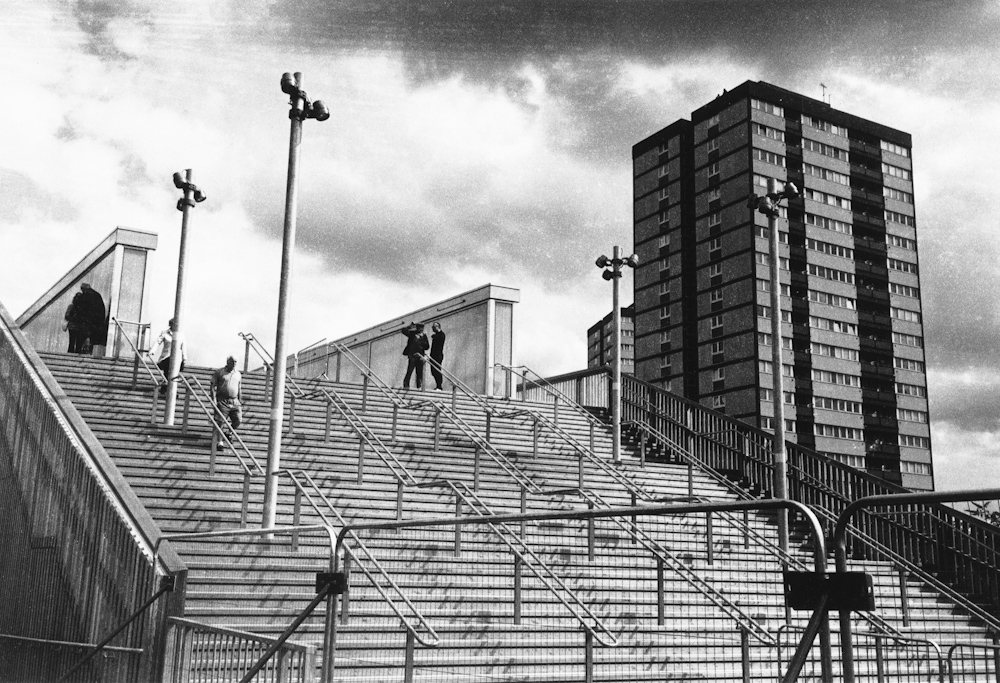
As we approach the Opening Ceremony, the gaps in the perimeter are coalescing, the circumference expanding. The teepee’d tents of the vehicular screening checkpoint had once offered partial permeability, but even pedestrians are not allowed through here anymore. The closest I can stay to the Fence is now through the cul-de-sacs and bluffs of the Carpenter’s estate. Overgrown grass, broken windows and boarded up houses. Huge pieces of rusted and twisted metal outside of workshops, piles of wood and unmatched wheels. A full sized DIY window display of faded psychedelic posters, Elvis vinyl’s and ancient toys in front of heavy curtains which make secret their creator’s living room. The desiderata of low lying eccentricity. The towers have been billboarded to provide megalithic advertising spaces on the side of people’s homes. You can’t have a BMW but at least someone will come and pick the rubbish up now.
I come out by Stratford Station, a recently declared ASB dispersal zone. Already palpable tension and anxiety. Already untenably long bus queues and it hasn’t even begun yet. This place feels like the site of some future disaster. The overwhelmingly visible police presence is just that – a presence. Crossing over the train tracks on Angel Lane a six foot high, four foot deep concrete barrier runs in lieu of the Fence. I let my shoulder run along it. As the fence reappears and I am again on the perimeter, a G4S Green Guard shouts at me. He tells me that I can’t photograph and that he’ll call the police. I don’t imagine he’d have to call very far. Looking back across Leyton Road at this ingress into the Olympic Park, it’s hard to believe that it is what it is. There is a yellow and black vehicle barrier which can be lifted to allow access, 10 meters further, to a vehicle checkpoint which is built into the Fence, with a smaller electrified fence on top of it. Before the barrier, traffic wardens redirect cars. The checkpoint is guarded by G4S on the outside and soldiers on the inside. “The Athlete’s Village” lays beyond; the most gated, gated community. This is truly the Architects of the East End’s greatest triumph – I hope they all feel very safe in there.
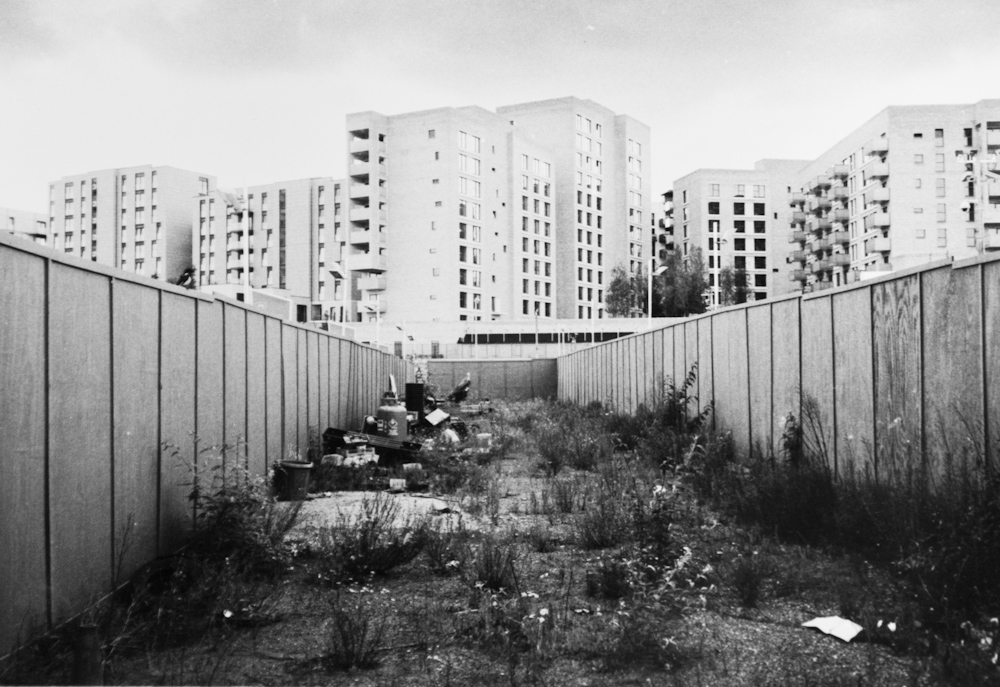
Five minutes later, outside Draper’s Field, I’m stopped by the Green Guards again. These ones look like professional bouncers. They tell me it’s against the rules to photograph the site. I tell them that I’m on public land, that they aren’t cops, that who ever wrote their rules isn’t a lawmaker and that they can’t do anything to me. A police women walks up and observers the encounter silently. The big guys seem impressed with my legal knowledge and “non-ethnic” appearance. I’ve never been asked to stop and account by private security on public land before and it scares me that they’ve been told they have the right. Perhaps, between the Blair era nanny-statism and the fire-sale-anti-ideology of the Coalition, this was the inevitable result. A fence that demarcates a private site, that was built with public money, on land claimed by court order, guarded by private employees, active soldiers and the police, all doing the same job. The scale of this event and the carte-blanche consensus around it has let the precedent set itself. This is not in the future, this it is how the redevelopment of the East End is being done now and we’ll be living in these ideas for the next 40 years.
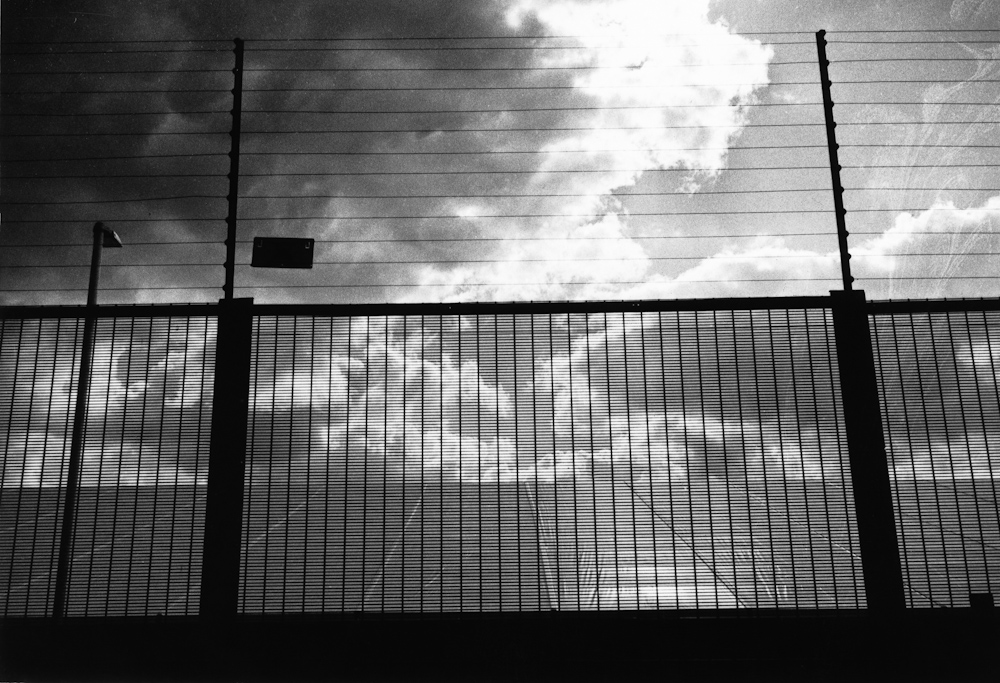
/// show me what a police state looks like
/// this is what a police state looks like
My legs start to ache as I begin to fully realise the scale of the site. The fence itself runs some 11 miles of circular repetition – abstracted authority’s visual chant. Walking down the closed off Eastway I don’t even want to take pictures anymore. I am conscious of being watched as I tie my shoe laces. At the entrance to the Broadcast centre, camera still in hand, I am politely greeted by the security guards stationed there. It appears I am equally mistakable for a respectable journalist or a security threat.
12/02/13 – Six Months After Closing Ceremony
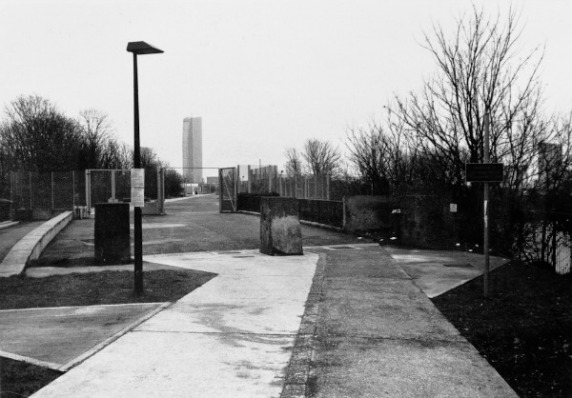
It’s snowing as I head out onto the Greenway, light flakes that don’t settle, stretching out the time since I last walked this route. That time I went down the A12 as this route had just been closed off. The gate is still here, but now it only cuts people off from the refurbished DLR for 12 hours of the day… a useful bit of legacy that. The security apparatus remains too; 12ft high, thick wire fences, electric wire, razor wire, and the signature, multi-headed CCTV gargoyles. Everything looks the same, only like it’s on a tape, running slowly backwards. The Warm-up track has turned back into piles of dirt. There’s even a security guard still here, bored as fuck and half asleep. He looks like he’d fall over if you shouted at him too loudly. A big black dog crosses my path. It turns to pee on a nouveau-Roman milestone and smiles at me, big, doggy, teethful grin. At least he’s happy. Down by Puddingy Mill Lane there are more people in more trucks, moving more piles of rubble around. A half finished bridge floats overhead. The whole site looks like a failed Escher – a work of impossible infrastructure.
Stratford High Street now feels like it’s always been this way. The architect’s integration of new and old through the cunning use of site-specific dirt and exhaust fumes is very successful. A derelict building, once full of bath-tubs, and its accompanying yard are now gone. All asphalted over. I’m not sure why planners feel Newham should need so much car parking, but it seems to be the go to thing. Across the road the wooden Strand East Tower still stands erect in its naked yard, as the vibrant new East End desperately attempts to prop itself up around it, bathed in its Ikea Blue, LED glow. The bridge that ferried visitors from the Greenway to the Park has been cut out and awkwardly pasted onto an adjacent car park. Another mysterious architectural stump. It obviously can’t stay there, it’s taking up valuable car parking space. After all this work, it seems all that’s been achieved is a facade. Off of the high street, a deserted office block stands proudly in near dereliction. The strange logic of London: empty buildings and a housing crisis. I head into Carpenter’s Estate. All the signs of Olympics are now dispersed. You wouldn’t even know you were on the border of the Park until you got up high. It feels quieter here, like nothing has happened or will happen for a while. On my way back to the High Street I pass a Phil Mitchell look-a-like with scabs on his head. As I sit outside The Builder’s Arms, and gaze at the blue lanterns hanging over the road, I imagine someone hiring this Faux-Phil to give “authentic tours”.
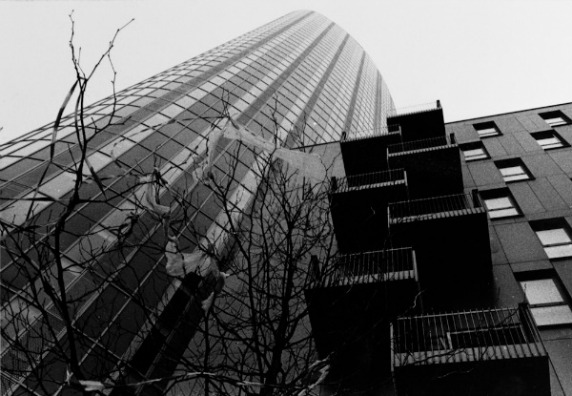
There’s nothing to physically demarcate the area where Stratford High Street becomes Westfield Stratford, just a thickening in the air as you approach and a congealing of people, like fry-up fat on cafe walls. Can’t say I have fond memories of this place. On the day of the Opening Ceremony, the old Hollywood-style staircase that rose up to Westfield felt like Dante’s Inferno, only, inverted. The flames have long since gone out and it’s still busy here, but more in a sense of people trying to go somewhere rather than be here. You can get anywhere from here. I can see why you’d want to. A woman with an Eastern European accent is shouting at her hunched clients: “Stansted, get on quickly, get on, Stansted!”. She can clearly see it to, though I hadn’t realised the need for such urgency. I keep going. Its so cold even the pigeons are hunched up. Great feathery bastards that they are, fat on discarded fast food. One claws at a dismembered chicken’s leg.
There’s something so brutal about the concrete walls that run along the bridge over the train tracks and something so absurd about the way the road is amputated, meters after a pelican crossing, that you can’t help but smile at the short stub jutting out 40ft above the tracks. Coming off the bridge onto Angel Lane it feels a long way from how it did when the Games were peaking. The sense that there was a perimeter, that there was an unbroken circle separating inside from outside is gone. Then it was like Aspen Road, a strip that separated two territories with an impossible gradient between them. I guess you could pay a years rent in one of these estates for the £4519 each meter of the Security fence costs. I catch a glimpse of a road sign with E20 on it, the first time I’ve seen the new post code.
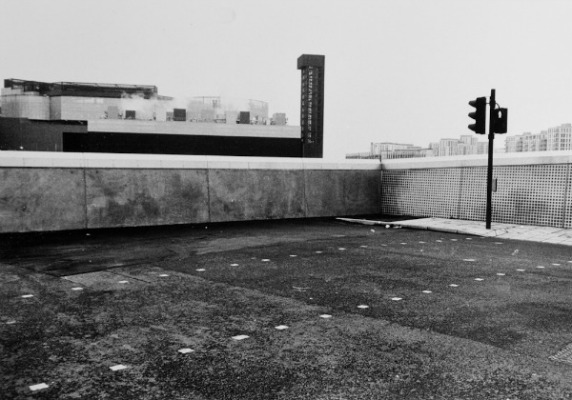
Last time I was here Draper’s Field looked like an advance staging ground for a future war. Sun gleaming off white tents, electric fences, Green Guards. Now it looks like a scorched earth campaign. You’d never have known it was a park. The smell of petrol and chicken wafts down from Leyton High Street. Hard to believe a street could smell that good.
By Leyton shopping centre, I can hardly see the Fence. It’s almost like the whole thing never happened. Walking past the allotments, with their bottle top totems and hosepipe Scarecrows, I feel cleansed. Then I cross the bridge over the train tracks and it’s all there in front of me again. I can see the fence running nearly a mile out from here. It’s only interrupted by offshoots from the dual carriage way. Behind it more scorched earth remains, landscaped dirt piles, plastic bags and empty food containers. Kafka-esque road works. Trees in wooden boxes. More car parking. Time speeding up as I walk along the A106, the overwhelming and reverberating feeling clogging my head can only be spoken as “crap” – the final resting place of so many different disappointments.
There needed to be some sort of event, some pretext for the suspension of normal process that this scale of change requires. It must be the biggest regeneration work to happen in London outside of a war but there’s something so war-torn about the visual landscape now, the fortifications and blackened earth, its just like the war that never was. When the Games were on there were soldiers on the streets, Chinooks in the sky all day and a Tannoy system constantly blaring incomprehensible commands. At the time it seemed unending. Now just the site, the fence around it and the digging. Endlessly postponed gratification.

About Oliver David
Oliver David (b.1989) is an artist born in London and now based in New York. With a background in Sociology, his work engages with issues of space and mediation as they relate to collective imagination and memory. He is currently pursuing an MFA at the School of Visual Arts.



